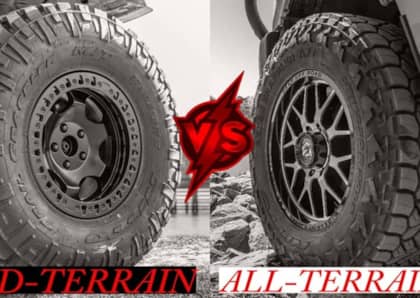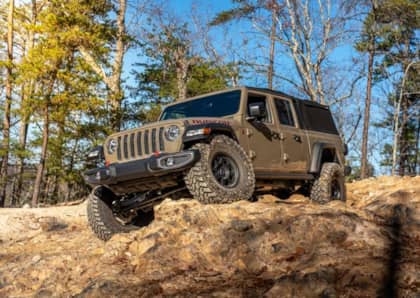Take Down That Roof-Top Tent: The Brutal Fuel Mileage Damage Done To Your Wallet by Anti-Aero Accessories
Cargo carriers—whether they're open racks designed to strap down larger gear such as kayaks, canoes, or tires, or closed units intended to haul luggage, food, and other items that must be protected from the elements—are increasingly common accessories for overlanding and family camping fans, off-roaders, or even just commuters looking to boost their vehicle's carrying capacity. The same goes for roof-top tents, which are often roughly the same size when folded down and secured.

While these types of accessories are definitely useful (seriously increasing what you can take with you on a trip without sacrificing passenger room, not to mention giving you an elevated, and protected place to sleep), there's a hidden cost associated with roof-mounted lumps that can ding you at the fuel pump. As with many things related to fuel efficiency, it's all about aerodynamics, or rather the lack thereof when you're flying a pod high above your roofline.
Disrupting The Flow
Every vehicle on the market has been gone over in meticulous detail by engineers seeking to make it as slippery as possible when traveling at highway speeds. Even trucks and SUVs that might not look particularly graceful, such as the Jeep Wrangler and the Mercedes-Benz G-Class, feature tiny details etched into parts like headlights, side mirrors, bumpers, and fenders that better guide a breeze around the body when placed in a wind tunnel.

These subtle touches can't make up for the enormous aero disturbance represented by a roof wart. Even something as subtle as a cargo rack can disrupt air flow to the point that it creates meaningful drag, that is to say, enough that a vehicle has to start burning more fuel to overcome it. Teardrop-shaped pods and baskets with multiple openings might appear to be reasonably aerodynamic, but they simply don't play nice with the existing shape of the vehicle.
Detailing The Mileage Drop
The actual amount of damage a rack, cargo pod, or rooftop tent does to your fuel mileage varies depending on a number of factors, but there's a general range that can be expected. Consumer Reports testing revealed a dip of between 11 and 19 percent when installing a rack and rooftop carrier on a mid-size sedan, while medium-size SUVs (which are less aero-efficient by nature) reduced that drop to between 2 and 13 percent. Men's Health hit the wind tunnel in a Buick TourX crossover to show how something as simple as roof bars were enough to cut fuel economy by 7 percent, with an additional carrier bumping that to nearly 20 percent.

What do those percentages translate into when paying for extra fuel? For a four-door automobile, you're looking at between 5 mpg and 9 mpg worse, with SUVs showing between a 1 mpg and 6 mpg drop.

Keep in mind, too, that these figures represent the impact of a cargo carrier when it's unloaded. Adding extra weight in the form of gear and equipment will further suck down fuel at an accelerated rate.
Weekends Good, Week-Days Bad
Obviously, there's not much you can do about the gas mileage hit associated with tents and carriers when you're relying on them to make your weekend possible. You can't go camping without a place to rest your head, and good luck kayaking without bringing along the actual watercraft.

Where it's possible to make a real difference, however, is in what happens once you're home from your adventure. How many cargo carriers and roof-top pop-ups do you see bumping around town, mid-week? Chances are, they're riding empty—and cranking up the fuel budget in the process.

Taking down a rooftop accessory once you're no longer in need of it might feel like a hassle on a Sunday night when all you want to do is rest from the journey home, but it's the single most effective step you can take towards reducing the gas costs associated with these accessories. You wouldn't leave your bike strapped to the roof all week, so why is a cargo pod any different?

Empty it, unstrap it, and stow it until it's time for the next voyage, and you won't end up overspending at the pump. What's more, you'll also extend the life of the equipment by keeping it protected from the weather, road grit, UV rays, and potential thieves. It's a win-win solution to a problem many drivers might not have been aware they were saddled with.







